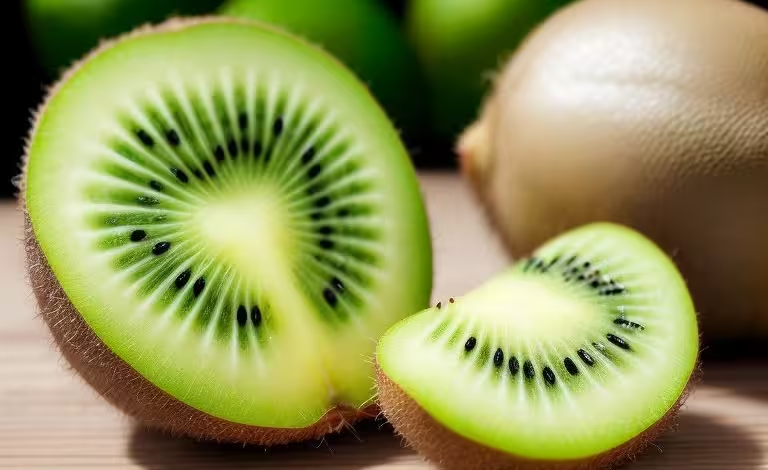
The Dangers of Eating Kiwi Skin: What You Need to Know
Kiwi, also known as kiwifruit, is a popular fruit cherished for its vibrant green flesh, tangy-sweet flavor, and numerous health benefits. However, there’s often debate about whether or not the skin of the kiwi should be eaten. While some people eat the skin without hesitation, others avoid it due to concerns about its safety and potential health risks. In this article, we'll explore the dangers of eating kiwi skin, separating fact from fiction, so you can make an informed decision.
What is Kiwi Skin?
The skin of a kiwi is a thin, brown, and fuzzy layer that encases the juicy, green flesh of the fruit. It is edible and contains additional fiber and nutrients. However, the texture and taste of the skin can be off-putting to some, and concerns have been raised about potential risks associated with eating it.
Nutritional Content of Kiwi Skin
Before diving into the dangers, it’s important to note that kiwi skin does have some nutritional benefits:
- Fiber: Kiwi skin is rich in dietary fiber, which aids in digestion and promotes a healthy gut.
- Vitamins: The skin contains vitamin C, vitamin E, and antioxidants that contribute to overall health.
- Minerals: Kiwi skin also provides small amounts of essential minerals like potassium and magnesium.
Despite these benefits, there are several reasons why you might want to think twice before eating kiwi skin.
The Dangers of Eating Kiwi Skin
While kiwi skin is technically edible, it’s not without its potential dangers. Here are some of the key risks associated with consuming the skin of a kiwi:
1. Pesticide Residue
One of the most significant concerns about eating kiwi skin is the potential presence of pesticide residue.
How It Works:
- Pesticide Exposure: Like many fruits, kiwis are often treated with pesticides during the growing process to protect them from pests and diseases. These chemicals can remain on the surface of the skin, even after washing.
- Health Risks: Consuming pesticides can pose various health risks, including hormonal imbalances, neurological problems, and an increased risk of certain cancers. The skin of the kiwi, being the outermost layer, is where most pesticide residue tends to accumulate.
2. Allergic Reactions
Kiwi skin may trigger allergic reactions in some individuals, particularly those who are sensitive to certain proteins found in the fruit.
How It Works:
- Allergen Exposure: The skin of the kiwi contains proteins that can cause allergic reactions in susceptible individuals. Symptoms may include itching, swelling of the lips and mouth, difficulty breathing, and in severe cases, anaphylaxis.
- Cross-Reactivity: People with latex allergies may be more likely to react to kiwi skin due to cross-reactivity. If you have a known latex allergy, it’s best to avoid eating kiwi skin to prevent an adverse reaction.
3. Digestive Discomfort
The fibrous texture of kiwi skin can be difficult for some people to digest, leading to digestive discomfort.
How It Works:
- Insoluble Fiber: While fiber is generally beneficial for digestion, the type of insoluble fiber found in kiwi skin can be rough on the digestive system, especially for those with sensitive stomachs or digestive disorders.
- Gastrointestinal Issues: Eating kiwi skin may cause symptoms like bloating, gas, and stomach cramps. In some cases, it could even lead to more severe digestive issues such as constipation or diarrhea.
4. Choking Hazard
The texture and size of kiwi skin can also pose a choking hazard, particularly for young children and individuals with swallowing difficulties.
How It Works:
- Tough Texture: The skin of the kiwi is tougher than the flesh, making it more difficult to chew and swallow properly. If not adequately chewed, it can become lodged in the throat, leading to choking.
- Risk for Children: Children are especially at risk due to their smaller airways and less developed chewing skills. It’s advisable to peel the kiwi before offering it to young children to minimize this risk.
5. Bacterial Contamination
Another concern with eating kiwi skin is the potential for bacterial contamination.
How It Works:
- Surface Contaminants: The skin of the kiwi can harbor bacteria from handling, transportation, and storage. Even if the fruit looks clean, harmful bacteria like Salmonella or E. coli could be present on the skin.
- Risk of Illness: Consuming contaminated kiwi skin can lead to foodborne illnesses, resulting in symptoms such as nausea, vomiting, diarrhea, and fever. Proper washing and peeling of the kiwi can help reduce this risk, but some bacteria may still remain.
6. Potential for Tooth Damage
The abrasive texture of kiwi skin can also potentially damage your teeth.
How It Works:
- Abrasion: The rough texture of the kiwi skin can wear down tooth enamel over time, especially if eaten frequently. Enamel is the protective outer layer of your teeth, and once it’s worn away, it doesn’t regenerate.
- Increased Sensitivity: Eroded enamel can lead to increased tooth sensitivity and a higher risk of cavities and other dental issues. If you experience tooth sensitivity or are concerned about your dental health, it’s best to peel the kiwi before eating.
7. Unpleasant Taste and Texture
While not necessarily a danger, the taste and texture of kiwi skin can be a major drawback for many people.
How It Works:
- Fuzzy Texture: The fuzzy, hairy texture of kiwi skin can be off-putting and unpleasant to eat. It may feel rough or irritating in the mouth, detracting from the overall enjoyment of the fruit.
- Bitter Taste: Kiwi skin has a slightly bitter taste compared to the sweet and tangy flesh. This bitterness can overpower the fruit’s flavor, making it less enjoyable to eat.
How to Safely Enjoy Kiwi
If you’re concerned about the potential dangers of eating kiwi skin, here are some tips on how to safely enjoy this nutritious fruit:
1. Peel the Kiwi
The simplest way to avoid the dangers of eating kiwi skin is to peel the fruit before consuming it. Use a knife or vegetable peeler to remove the skin, leaving behind the juicy, green flesh that’s packed with nutrients.
2. Wash Thoroughly
If you prefer to eat kiwi skin for its fiber and nutrient content, make sure to wash the fruit thoroughly before eating. Use a fruit and vegetable wash or scrub the skin under running water to remove as much pesticide residue and bacteria as possible.
3. Choose Organic Kiwis
Opting for organic kiwis can reduce your exposure to harmful pesticides. Organic fruits are grown without synthetic chemicals, making them a safer choice if you decide to eat the skin.
4. Cut the Kiwi into Smaller Pieces
To reduce the risk of choking, especially for children, cut the kiwi into smaller, bite-sized pieces. This makes it easier to chew and swallow, minimizing the chances of it getting stuck in the throat.
5. Consider Blending
If you want to include the skin for its fiber but dislike the texture, consider blending the whole kiwi into a smoothie. The blending process breaks down the tough texture, making it easier to consume while still getting the benefits of the skin.
To Eat or Not to Eat Kiwi Skin?

While kiwi skin is technically edible and contains additional nutrients, there are several potential dangers to consider before adding it to your diet. From pesticide residue and allergic reactions to digestive discomfort and the risk of bacterial contamination, eating kiwi skin may not be worth the risks for everyone.
If you decide to eat kiwi skin, take precautions such as washing the fruit thoroughly, choosing organic kiwis, and cutting the fruit into smaller pieces to minimize potential hazards. However, for most people, peeling the kiwi remains the safest and most enjoyable way to enjoy this nutritious fruit.
Ultimately, the decision to eat kiwi skin comes down to personal preference and individual health considerations. By being informed about the potential dangers, you can make the best choice for your health and well-being.

